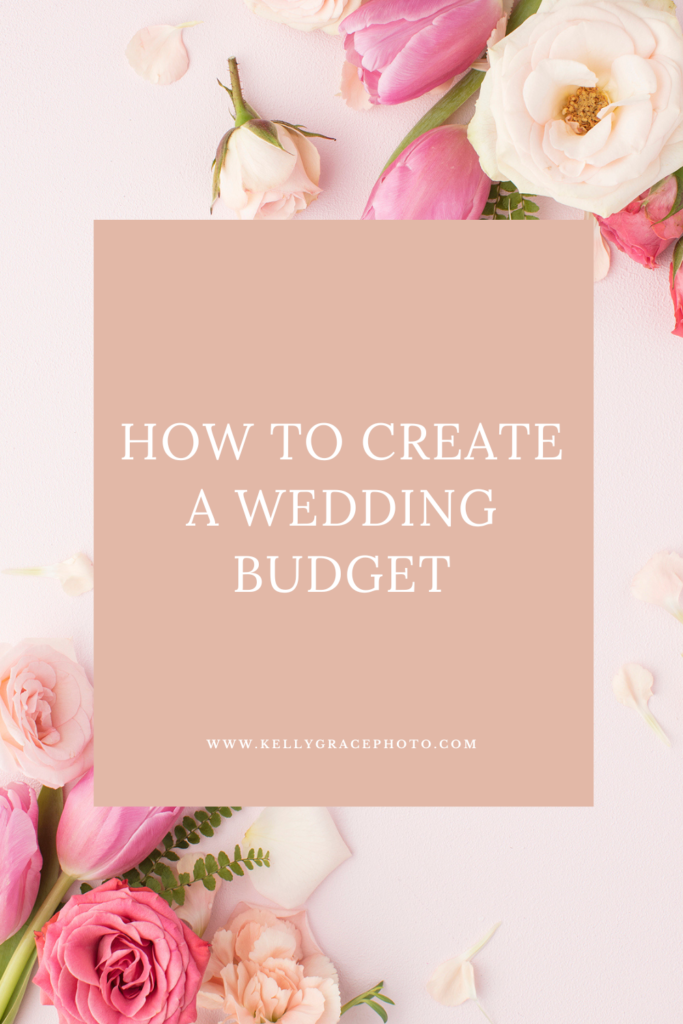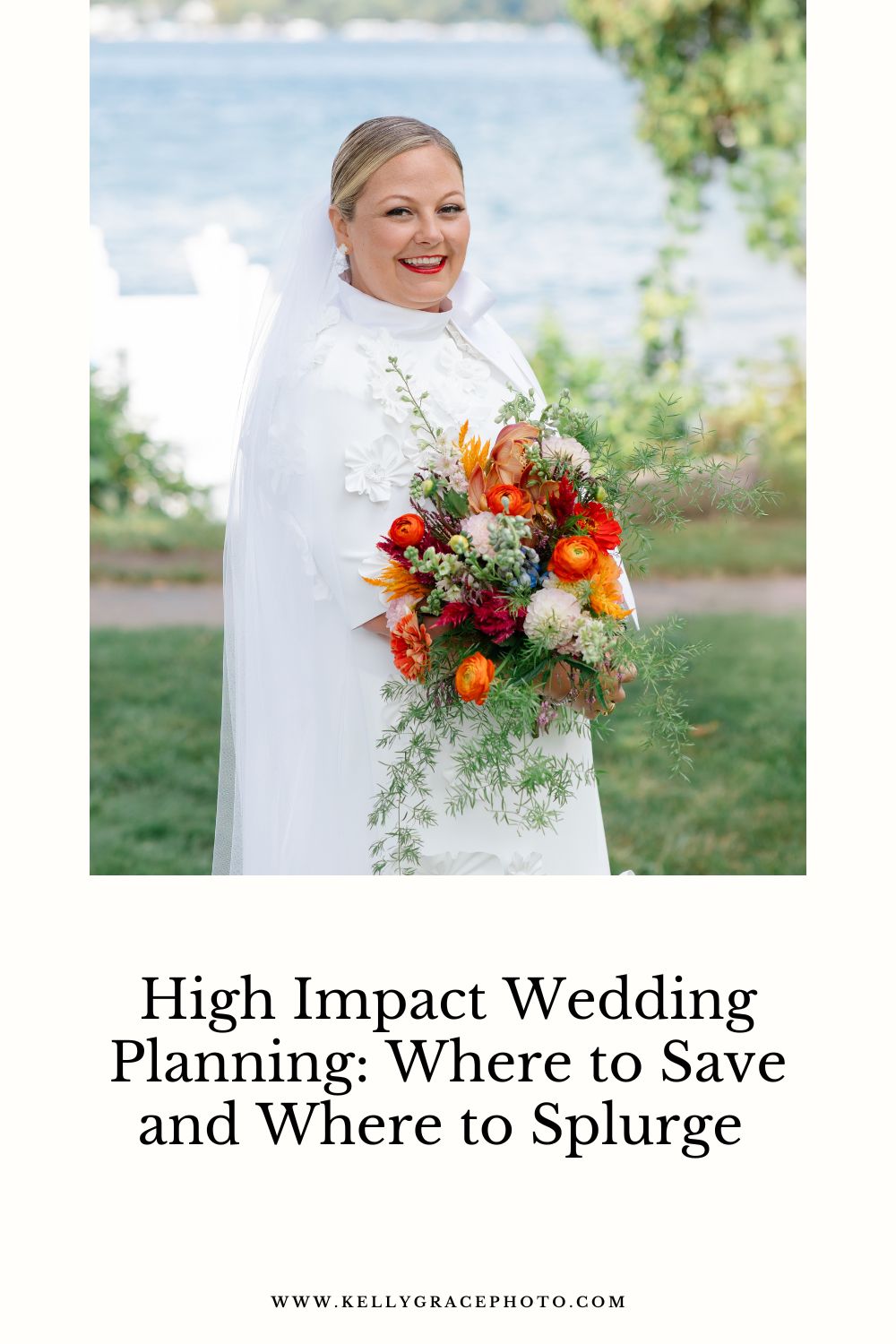I’m excited to start an all new series discussing all things wedding budgeting! Over the next few weeks I’ll be breaking down how to create a wedding budget, categories to consider when planning and tips + tricks to save you money!
Before you even start thinking about contacting wedding vendors, there are four steps you need to take first! What do you need to do before you start assembling your dream team? Check out the answer below!
4 Steps to Take Before You Start Wedding Planning (and Wedding Budget!)

Step 1: Know Your Numbers
This may seem obvious, but it’s important to know the exact amount of money you have to spend on your big day before you start booking vendors. There are 3 different sources of money you can look to:
What will each of your parents/loved ones be contributing?
It’s important to never assume your parents or loved ones will be covering wedding costs, but it’s a good idea to sit down and have a conversation. Some may provide a lump sum for you to spend any way you want, some may contribute to a certain vendor or some may request the money go toward a specific event such as the reception or rehearsal dinner.
After the engagement, sit down with your family, discuss things thoroughly, create a plan and have expectations properly communicated.
What amount can you set aside from your income?
How much can you and your fiance realistically (and comfortably) afford to spend given your current expenses? Having a detailed personal budget is key to know exactly how much you can save toward your wedding expenses each month.
If you don’t have a personal budget yet now is the time for you to each start one! If you’d like to get started today, I’m a huge fan of The Every Dollar Budget app or You Need a Budget app (they both have web versions too!).
The best way to budget is to give every dollar that you bring in a “name”… make sure you are budgeting for things like utilities, rent, food, internet, cell phone, insurances, and making minimum payments on your existing debt.
Whatever you have left over to be budgeted after all your main expenses are allocated can go directly toward your wedding savings. This amount may change from month to month because each month can have different expenses!
Sit down with a glass of wine, write out your budget and see what you can personally contribute!
What lump sum do you and your fiance have in savings?
If you each already have a savings account in place there are few different ways you can look at utilizing this money depending on if you have personal debt or not.
- Are You Out of Consumer Debt? If you are currently out of consumer debt (meaning no credit cards, student loans, vehicle payments, etc) I would suggest setting aside at least three months of emergency savings in case something unexpected would happen (i.e. lose your job, illness, broken down vehicle, house maintenance). To figure out this amount, simply take your monthly expenses (not income) and multiply that by 3. That number is what you should have as your 3 month emergency savings and everything above that number can be moved into a separate savings account labeled as “wedding” to be used for wedding expenses.
- Do You Have Consumer Debt? If you have consumer debt, I would highly recommend utilizing this lump sum savings either toward paying down/off your debt (so you can begin married life out on the right foot) and then start saving towards wedding expenses OR ear-mark the lump sum for savings towards the wedding and utilize your budget to pay off your debt. Either way is fine and will help you reach your wedding goals!
Once you have answers to the above three questions, combine all your numbers together and voila.. You have your estimated ballpark wedding budget!
Step 2: Create A Way To Track Your Spending
The best way to track how much you are spending on each item is to create a detailed spreadsheet. This will be a living document..something you’ll revert to time and time again to update.
Utilize an excel spreadsheet either through Microsoft Office or Google Sheets. In the first column write out all the vendors and items you’ll need to allocate money towards. Write in everything!
When you sit down to create your budget, label the second column as estimated and write out a good guess of what you think that particular vendor or item will cost. The number could be based off previous knowledge, research you’ve done or what a friend/family member spent on that particular item. Next, after you start reaching out to different vendors and getting quotes add another column, label it modified and list the amount you were provided.
Once you start paying for items and vendors, create a third column and label that as actual.
Be sure to add in a formula to the spreadsheet so it adds up all the amounts for you at the bottom. This will tally up exactly how much you are spending in each category and show you if you are going over budget.
Step 3: Determine The Venue
The venue will most likely be one of the most expensive items in your budget (depending on priority) so I would suggest finding the venue location first and get a costing!
Are you wanting indoor, outdoor, destination, church, old train station, castle in Ireland? If you’re having trouble deciding, start with your guest list. That number could help you pick a location. You can’t fit 500 friends and family members in a woodland treehouse wedding.
Of course, one of the quickest ways to save money is to limit your guest list. But maybe tons of people celebrating your big day is your number one wedding wish. That brings us to the next point.
Step 4: Create A List Of Your Non-Negotiables
When creating your budget list out the vendors/items that are most important to the least important. Spend more money on the things that are most important to you and less money on those that aren’t.
For example, let’s say your most important vendor is your wedding photographer, but the DJ isn’t the highest priority. Allocate more money toward the photographer (so you get the one of your dreams) and allocate less toward the DJ.
Have a conversation with your fiance and write out the 2-3 items that are most important and budget for those immediately. You can allot bigger percentages of your budget to those items, which will then reveal how much you have left to spend on the other wedding items that aren’t as important to you.
Budget For The Wedding Of Your Affordable Dreams
Absolutely do not go into debt to get married (& don’t put it on a credit card)!
Did you know the number one cause of divorce is money fights and money problems? If you want to start your marriage out on the right foot (who wouldn’t?), then do not start out your marriage swimming in debt. When planning your wedding think about the big picture and beyond just the wedding day.
If you can’t afford it chances are you don’t need it. Don’t pay for your wedding on a credit card. If you don’t have the money to pay for a vendor/item then you simply can’t afford it. If it’s something you really want, tweak your budget around so you can afford it (i.e. get rid of something or reduce the budget on another line item). Save yourself a headache and don’t start your married life in a mountain of credit card debt!
Remember, the wedding is not about how much money you spend, but about the two of your families coming together as one! It’s about the love, joy and happiness you feel finally getting to say, “I do.”
Next week, I’ll be breaking down the various wedding categories you may want to include in your wedding budget. Don’t miss it!






add a comment
+ COMMENTS